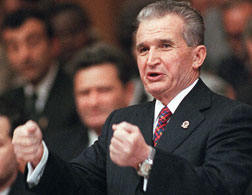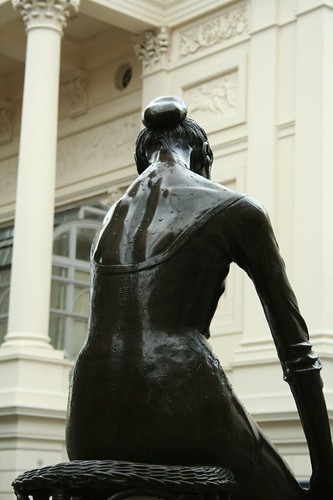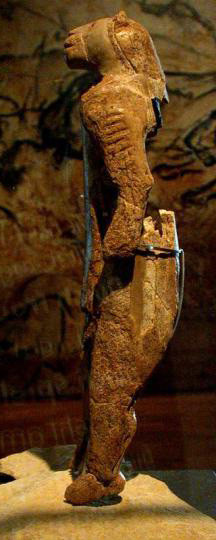Em meio à reação pública, provocada pela excomunhão dos médicos que realizaram aborto em uma menina pernambucana de 9 anos, estuprada pelo padrasto e grávida de gêmeos, diversos argumentos e questionamentos acalorados, a favor e contra a decisão da Igreja Católica, encontraram seu caminho até as páginas da imprensa. Subitamente, ao invés de discutir as causas da tragédia da menor estuprada, o que podemos fazer para reduzir a frequência com que esse crime se repete em nossas cidades e como podemos ajudar suas vítimas, a sociedade brasileira mergulha num debate sobre os méritos da Igreja Católica e sua anacrônica instituição da excomunhão.
Entre os diversos argumentos pró e contra a ação da Igreja, muito poucos sequer endereçam o objetivo político da polêmica pública provocada, deliberadamente, pelo Arcebispo de Recife e Olinda. Todo o debate e energia investidos em discussões éticas e morais, tanto no ataque quanto na defesa da Igreja Católica, atendem e beneficiam, inadvertidamente, esse objetivo político. Por isso é importante expô-lo claramente, de forma que a sociedade brasileira tenha a opção de debater ou não, caso julgue relevante, os aspectos éticos das ações da Igreja. Paradoxalmente, contudo, responder a alguns dos questionamentos éticos levantados é a melhor maneira de expor a natureza política das excomunhões de Pernambuco.
Um dos temas de questionamento mais frequentes é: por que a Igreja não excomungou o padrasto estuprador? É claro que esse ponto é muito mais um clamor, provocado por uma profunda sensação de injustiça, do que um argumento pertinente ao debate sobre o que a decisão da Igreja revela de sua postura social, sua relevância e, em última instância, seu valor como instituição religiosa. Dois outros questionamentos frequentes, esses sim, de maior impacto na credibilidade da Igreja e suas instituições, referem-se à suspensão recente (janeiro/09), da excomunhão do bispo Richard Williamson, notório por sua negação do Holocausto, e o fato do Papa Pio XII ter deixado de excomungar Hitler, quando a política nazista de extermínio em massa se tornou conhecida.
Analisar e explicar essas três aparentes contradições – porque a Igreja suspendeu a excomunhão do Bispo Williamson, não cogita excomungar o padrasto estuprador e está em processo acelerado de canonização de Pio XII – é, na minha opinião, a maneira mais fácil para se entender como o incidente de Pernanambuco se encaixa no programa político implementado, na Igreja Católica, pelo Papa Bento XVI.
Hoje excomunga, amanhã beija
Em primeiro lugar, é preciso entender claramente o que é a excomunhão. A sanção da excomunhão é um anúncio oficial, que informa à comunidade católica de que as idéias e o comportamento de tal pessoa não devem ser seguidas e, também, notifica o clero de que essa pessoa não deve mais receber os sacramentos, com exceção da Reconciliação.
Do ponto de vista da Igreja são os fiéis que se excomungam – isto é afastam-se da comunidade, da comunhão; a ação da Igreja é apenas uma informação de que a excomunhão ocorreu. Segundo o direito canônico, praticar o aborto é um ato de excomunhão automática e, portanto, o que o Arcebispo de Olinda e Recife fez foi, simplesmente, comunicar a seu público o status, de facto, dos médicos e da mãe da vítima.
A forma usual de reverter a excomunhão envolve: uma declaração de arrependimento, a profissão do Credo (se a ofensa envolveu heresia) ou uma reafirmação de obediência, pelo excomungado; uma declaração de reconciliação, pelo padre ou bispo com poderes para emiti-la e, então, a realização do sacramento da Reconciliação.
A Excomunhão não é, portanto, um instrumento de punição, mas de pressão social, para que o(s) atingido(s) voltem a prestar obediência à doutrina e ao comando da Igreja. Como tal, é utilizado em casos de “crimes” (no sentido canônico) de consciência – aqueles em que o culpado agiu racional e deliberadamente, em desacordo com a doutrina Católica.
O bispo anti-semita Williamson percorreu o processo e o ritual de Reconciliação e, consequentemente, sua excomunhão foi encerrada. Aliás, sua excomunhão (em 1988), não tinha nenhuma relação com sua posição anti-semita. Williamson e outros três padres foram consagrados bispos, pelo arqui-conservador Cardeal Lefebvre, em desobediência frontal ao Vaticano, resultando na imediata excomunhão dos cinco. Lefebvre (morto em 91) foi o fundador e Williamson e os demais “bispos” são membros da Sociedade São Pio X, forte opositora às mesmas mudanças modernizadoras, introduzidas pelo Concílio Vaticano II que, agora, Bento XVI dedica-se a reverter (por exemplo, reintroduzindo a Missa Tridentina, abolida por Paulo VI, em 1963, e um dos quatro pontos centrais da rebelião de Lefebvre).
Crimes “comuns” ou pecados motivados pela ignorância ou por baixos instintos, como o estupro infantil, não requerem excomunhão porque, a princípio, nenhum católico tem dúvida sobre o estado, em pecado, do criminoso. No caso do pecador-criminoso, não há uma polêmica social e política a demandar um recurso de pressão social – como na batalha que a Igreja trava, pela condenação e criminalização do aborto.
O que nos leva ao terceiro e último questionamento levantado contra a excomunhão dos médicos pernambucanos: por que o papa da 2ª. Guerra, Pio XII, não excomungou Hitler pela prática, sob a égide da lei, de extermínio em massa? Não seria esse um caso típico, a demandar esclarecimento e orientação da numerosa população católica alemã, por parte de sua Igreja? A resposta oficial do Vaticano a esses questionamentos tem seguido a (fraca) linha de que “os tempos eram muito complicados” e que, nas complicadas circunstâncias, Pio XII fez o melhor que pôde. A verdade, nua e crua, é que não há mesmo coerência no emprego, pela Igreja Católica, do instrumento da excomunhão. Seu uso é ditado pela agenda política e pelas circunstâncias da ocasião. É, portanto, um instrumento político.
Qual é, então, o objetivo político das excomunhões (melhor dizendo: da decisão de comunicar publicamente, com alarde, o status de excomungados) dos médicos pernambucanos e da mãe da vítima (também ela, uma vítima)?
Desde a ascenção, Bento XVI deixou claro que sua estratégia para recuperar o prestígio e o poder da Igreja Católica, em declínio desde os anos 70, consistiria em eliminar o relativismo do discurso doutrinário, com isso “purificando o rebanho católico” – permanecendo os mais comprometidos e ativamente praticantes, ainda que ao preço de uma redução inicial no número de fiéis. Assumiu um discurso mais contundente (sempre de matiz conservador) em relação a temas polêmicos, como homossexualidade, aborto, contracepção e prevenção da AIDS; fortaleceu a influência de grupos e ordens ultra-direitista/ultra-conservadoras, como a já mencionada Sociedade São Pio X e a polêmica Opus Dei.
Essa estratégia está surtindo os efeitos desejados pois, de fato, os praticantes católicos estão assumindo matizes mais tradicionalistas e “carismáticos” e os menos praticantes ou menos alinhados à nova doutrina estão sendo progressivamente alienados da instituição.
É nesse processo que se enquadram as excomunhões de Pernambuco e, como instrumentos políticos, também foram muito bem sucedidas: ocuparam um imenso espaço na mídia e nas discussões do público, polarizaram os fiéis, elevando seu “investimento moral” na nova agenda doutrinária. Mais católicos tiveram que “escolher suas cores”, uns afastando-se mais, outros alinhando-se mais à instituição Católica. Uma obstetra de Guarulhos defende a excomunhão, no fórum de leitores do Estado, argumentando que não havia risco real de vida, para a menina de 9 anos, numa gestação e parto de gêmeos porque, em 1939, uma menina peruana “de estrutura franzina, teve um filho saudável aos 5 anos de idade”. Podemos, certamente, esperar mais excomunhões, canonizações polêmicas e outros movimentos de reconquista de poder e espaço de opinião, nos próximos anos de papado de Bento XVI.
Apostas arriscadas no cassino vazio
Não há dúvida de que a radicalização do discurso Católico está criando uma comunidade mais uniforme, combativa, comprometida com (e obediente à) autoridade central do Vaticano. Essa é a estratégia de Bento XVI, atualmente em implementação, em todo o mundo.
O preço que estamos pagando (e continuaremos a pagar) pela determinação férrea dessa implementação é bem ilustrado pelo caso de Pernambuco: a nova Igreja Católica não somente deixa de apoiar, como aumenta a miséria das vítimas de tragédias, se isso estiver em seu interesse político. Não tem escrúpulos, por exemplo, de desviar para sua agenda a atenção da sociedade que, ao invés de concentrar-se nas disfunções sociais que levam ao estupro de uma criança de 9 anos pelo padastro, foi arrastada para um debate anacrônico e irrelevante, sobre excomunhão, à força de declarações kafkanianas de um arcebispo desalmado, que afirma: "Esse padrasto cometeu um pecado gravíssimo. Agora, mais grave do que isso, sabe o que é? O aborto, eliminar uma vida inocente".
Resta saber se o sucesso inicial da estratégia de Bento XVI resultará em um maior número de fiéis, a longo prazo, ou se acabará por acelerar a migração de católicos para outras formas de cristianismo, ou mesmo para outras religiões, mais comprometidas com a realidade e os desafios do fiel do século 21.




 People have been fixated on Napoleon's penis since Napoleon's doctor allegedly cut it off during his autopsy in 1821 and gave it to a priest in Corsica. The penis, which was not properly preserved, has been compared over the years to a piece of leather, a shriveled eel and to beef jerky. In 1927 when it went on display in Manhattan, TIME weighed in, comparing it to a "maltreated strip of buckskin shoelace." It's enough to give anyone a complex! In 1977, a urologist living in New Jersey purchased the modern-day relic for $3,000 and stored it under his bed until he died 30 years later. His daughter inherited Napoleon's penis and has fielded at least one $100,000 offer.
People have been fixated on Napoleon's penis since Napoleon's doctor allegedly cut it off during his autopsy in 1821 and gave it to a priest in Corsica. The penis, which was not properly preserved, has been compared over the years to a piece of leather, a shriveled eel and to beef jerky. In 1927 when it went on display in Manhattan, TIME weighed in, comparing it to a "maltreated strip of buckskin shoelace." It's enough to give anyone a complex! In 1977, a urologist living in New Jersey purchased the modern-day relic for $3,000 and stored it under his bed until he died 30 years later. His daughter inherited Napoleon's penis and has fielded at least one $100,000 offer.

















